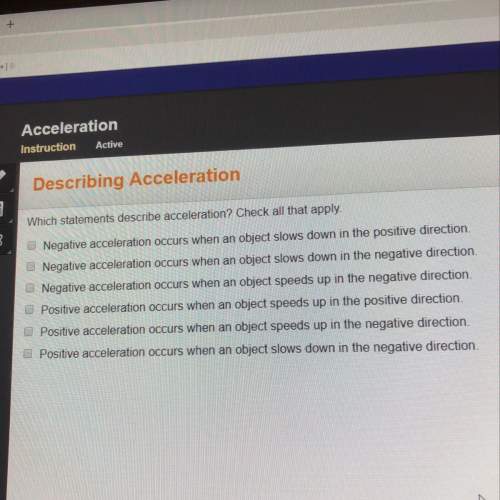
Physics, 17.07.2019 02:20 gomez36495983
Apotter's wheel—a thick stone disk of radius 0.500 m and mass 115 kg—is freely rotating at 50.0 rev/min. the potter can stop the wheel in 6.00 s by pressing a wet rag against the rim and exerting a radially inward force of 72.0 n. find the effective coefficient of kinetic friction between the wheel and rag.

Answers: 1


Other questions on the subject: Physics

Physics, 21.06.2019 22:50, ijohnh14
If the temperature were raised very high, classically what would we expect the heat capacity per object to be for this one-dimensional system? give a numerical value. chigh t = __ j/k/object (one reason for the discrepancy is that the high-temperature limit assumes that the number of oscillators is large (n > > 1), which is not the case in this tiny system.)
Answers: 2

Physics, 22.06.2019 00:00, rickevaaaa
Did the proton move into a region of higher potential or lower potential? did the proton move into a region of higher potential or lower potential? because the proton is a negative charge and it accelerates as it travels, it must be moving from a region of higher potential to a region of lower potential. because the proton is a negative charge and it accelerates as it travels, it must be moving from a region of lower potential to a region of higher potential. because the proton is a positive charge and it slows down as it travels, it must be moving from a region of higher potential to a region of lower potential. because the proton is a positive charge and it slows down as it travels, it must be moving from a region of lower potential to a region of higher potential. request answerpart bwhat was the potential difference that stopped the proton? express your answer with the appropriate units.î”v î” v = nothingnothingrequest answerpart cwhat was the initial kinetic energy of the proton, in electron volts? express your answer in electron volts. ki k i = nothing ev request answerprovide feedback
Answers: 2

Physics, 22.06.2019 06:30, corcoranrobert1959
At very high pressures, gases become and will eventually a) more dense; become hotter b) more dense; change to a liquid or solid c) less dense; combust d) less dense; turn into a liquid
Answers: 1

Physics, 22.06.2019 09:00, alisonnn101
A2000 kg car is rounding a curve of radius 200 m on a level road. the maximum frictional force the road can exert on the tires of the car is 4000 n. what is the highest speed at which the car can round the curve?
Answers: 1
You know the right answer?
Apotter's wheel—a thick stone disk of radius 0.500 m and mass 115 kg—is freely rotating at 50.0 rev/...
Questions in other subjects:




Mathematics, 08.03.2021 22:20

History, 08.03.2021 22:20

Mathematics, 08.03.2021 22:20

Computers and Technology, 08.03.2021 22:20

Mathematics, 08.03.2021 22:20





